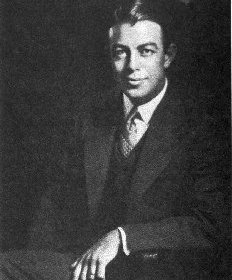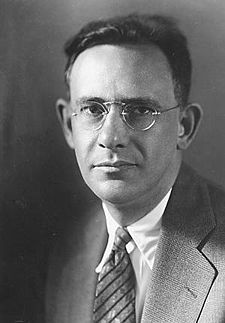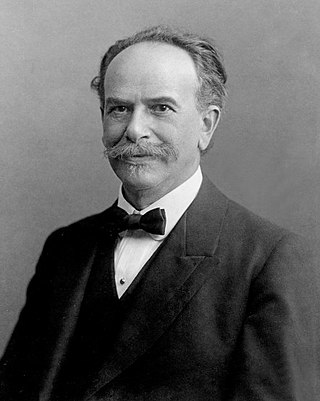Related Research Articles

Benjamin Lee Whorf was an American linguist and fire prevention engineer best known for proposing the Sapir–Whorf hypothesis. He believed that the structures of different languages shape how their speakers perceive and conceptualize the world. Whorf saw this idea, named after him and his mentor Edward Sapir, as having implications similar to those of Einstein's principle of physical relativity. However, the concept originated from 19th-century philosophy and thinkers like Wilhelm von Humboldt and Wilhelm Wundt.

Cultural anthropology is a branch of anthropology focused on the study of cultural variation among humans. It is in contrast to social anthropology, which perceives cultural variation as a subset of a posited anthropological constant. The term sociocultural anthropology includes both cultural and social anthropology traditions.

Edward Sapir was an American anthropologist-linguist, who is widely considered to be one of the most important figures in the development of the discipline of linguistics in the United States.

Franz Uri Boas was a Jewish-American anthropologist and a pioneer of modern anthropology who has been called the "Father of American Anthropology". His work is associated with the movements known as historical particularism and cultural relativism.
The idea of linguistic relativity, known also as the Whorf hypothesis, the Sapir–Whorf hypothesis, or Whorfianism, is a principle suggesting that the structure of a language influences its speakers' worldview or cognition, and thus individuals' languages determine or influence their perceptions of the world.
Dell Hathaway Hymes was a linguist, sociolinguist, anthropologist, and folklorist who established disciplinary foundations for the comparative, ethnographic study of language use. His research focused upon the languages of the Pacific Northwest. He was one of the first to call the fourth subfield of anthropology "linguistic anthropology" instead of "anthropological linguistics". The terminological shift draws attention to the field's grounding in anthropology rather than in what, by that time, had already become an autonomous discipline (linguistics). In 1972 Hymes founded the journal Language in Society and served as its editor for 22 years.
Cultural relativism is the position that there is no universal standard to measure cultures by, and that all cultural values and beliefs must be understood relative to their cultural context, and not judged based on outside norms and values. Proponents of cultural relativism also tend to argue that the norms and values of one culture should not be evaluated using the norms and values of another.
A vocabulary is a set of words, typically the set in a language or the set known to an individual. The word vocabulary originated from the Latin vocabulum, meaning "a word, name". It forms an essential component of language and communication, helping convey thoughts, ideas, emotions, and information. Vocabulary can be oral, written, or signed and can be categorized into two main types: active vocabulary and passive vocabulary. An individual's vocabulary continually evolves through various methods, including direct instruction, independent reading, and natural language exposure, but it can also shrink due to forgetting, trauma, or disease. Furthermore, vocabulary is a significant focus of study across various disciplines, like linguistics, education, psychology, and artificial intelligence. Vocabulary is not limited to single words; it also encompasses multi-word units known as collocations, idioms, and other types of phraseology. Acquiring an adequate vocabulary is one of the largest challenges in learning a second language.
Ethnolinguistics is an area of anthropological linguistics that studies the relationship between a language and the cultural behavior of the people who speak that language.
Anthropological linguistics is the subfield of linguistics and anthropology which deals with the place of language in its wider social and cultural context, and its role in making and maintaining cultural practices and societal structures. While many linguists believe that a true field of anthropological linguistics is nonexistent, preferring the term linguistic anthropology to cover this subfield, many others regard the two as interchangeable.
Intercultural communication is a discipline that studies communication across different cultures and social groups, or how culture affects communication. It describes the wide range of communication processes and problems that naturally appear within an organization or social context made up of individuals from different religious, social, ethnic, and educational backgrounds. In this sense, it seeks to understand how people from different countries and cultures act, communicate, and perceive the world around them. Intercultural communication focuses on the recognition and respect of those with cultural differences. The goal is mutual adaptation between two or more distinct cultures which leads to biculturalism/multiculturalism rather than complete assimilation. It promotes the development of cultural sensitivity and allows for empathic understanding across different cultures.
Linguistic determinism is the concept that language and its structures limit and determine human knowledge or thought, as well as thought processes such as categorization, memory, and perception. The term implies that people's native languages will affect their thought process and therefore people will have different thought processes based on their mother tongues.
That there are an unusually large number of Eskimo words for snow is a popular claim that Eskaleut languages, specifically the Yupik and Inuit varieties, have far more words for snow than other languages, particularly English.
The ethnography of communication (EOC), originally called the ethnography of speaking, is the analysis of communication within the wider context of the social and cultural practices and beliefs of the members of a particular culture or speech community. It comes from ethnographic research It is a method of discourse analysis in linguistics that draws on the anthropological field of ethnography. Unlike ethnography proper, though, EOC takes into account both the communicative form, which may include but is not limited to spoken language, and its function within the given culture.
In sociolinguistics, SPEAKING or the SPEAKING model, is a model socio-linguistic study developed by Dell Hymes. Hymes developed this model as part of a new methodology referred to as the ethnography of speaking. This model is a tool to assist the identification and labeling of components of interactional linguistics that was driven by his view that, in order to speak a language correctly, one needs not only to learn its vocabulary and grammar, but also the context in which words are used. In essence, learning the components of the SPEAKING model is essential for linguistic competence.
In linguistics, the term semantic domain refers to an abstract space containing all the 'meanings' of every term in a language. Since multiple words can have the same meaning, the semantic domain can also be thought of as grouping the terms based on meaning. Harriet Ottenheimer (2006), a writer in Linguistic Anthropology, defines a semantic domain as a “specific area of cultural emphasis”.
Ray L. Birdwhistell was an American anthropologist who founded kinesics as a field of inquiry and research. Birdwhistell coined the term kinesics, meaning "facial expression, gestures, posture and gait, and visible arm and body movements". He estimated that "no more than 30 to 35 percent of the social meaning of a conversation or an interaction is carried by the words." Stated more broadly, he argued that "words are not the only containers of social knowledge." He proposed other technical terms, including kineme, and many others less frequently used today. Birdwhistell had at least as much impact on the study of language and social interaction generally as just nonverbal communication because he was interested in the study of communication more broadly than is often recognized. Birdwhistell understood body movements to be culturally patterned rather than universal. His students were required to read widely, sources not only in communication but also anthropology and linguistics. "Birdwhistell himself was deeply disappointed that his general communicative interests and goals were not appropriately understood." Collaborations with others, including initially Margaret Mead and Gregory Bateson, and later, Erving Goffman and Dell Hymes had huge influence on his work. For example, the book he is best known for, Kinesics and Context, "would not have appeared if it had not been envisaged by Erving Goffman" and he explicitly stated "the paramount and sustaining influence upon my work has been that of anthropological linguistics", a tradition most directly represented at the University of Pennsylvania by Hymes.
Pliny Earle Goddard was an American linguist and ethnologist noted for his extensive documentation of the languages and cultures of the Athabaskan peoples of western North America. His early research, carried out under the auspices of the University of California, Berkeley, focused on the Hupa and adjacent Athabaskan groups in northwestern California. After moving to New York in 1909 at the invitation of Franz Boas his scope expanded to include the Athabaskans of the Southwest, Canada, and Alaska. During the 1910s and 1920s. as Boas's junior colleague at the American Museum of Natural History and Columbia University, Goddard played a major role in creating the academic infrastructure for American Indian linguistics and anthropology in North America.
Richard Bauman is a folklorist and anthropologist, now retired from Indiana University Bloomington. He is Distinguished Professor emeritus of Folklore, of Anthropology, and of Communication and Culture. Before coming to IU in 1985, he was the Director of the Center for Intercultural Studies in Folklore and Ethnomusicology at the University of Texas and a faculty member in the UT Department of Anthropology. Just before retiring from Indiana, he was chair of the IU Department of Folklore and Ethnomusicology, as well as an important member of the Department of Anthropology and the Department of Communication and Culture.

American anthropology has culture as its central and unifying concept. This most commonly refers to the universal human capacity to classify and encode human experiences symbolically, and to communicate symbolically encoded experiences socially. American anthropology is organized into four fields, each of which plays an important role in research on culture:
- biological anthropology
- linguistic anthropology
- cultural anthropology
- archaeology
References
- Hart, W.B. (2005). "Franz Boas and the roots of intercultural communication research". International and Intercultural Communication Annual (28): 176–193.
- Ottenheimer, H.J. (2006). The anthropology of language: An introduction to linguistic anthropology. Belmont: Thomson Higher Education.
- ↑ Ottenheimer 2006, p. 266.
- ↑ Ottenheimer 2006, p. 15.
- ↑ Hart 2005, p. 179.